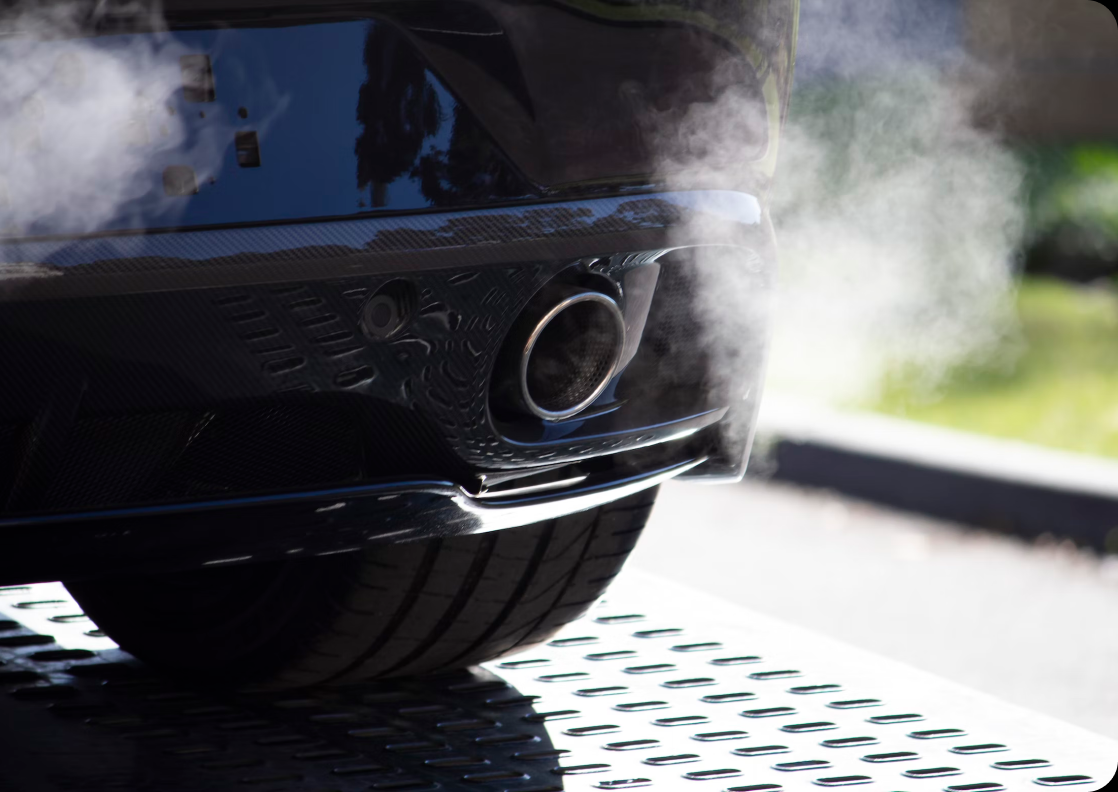Frequently asked questions
Vehicles which use fossil fuels to power their engine produce exhaust emissions. These emissions include greenhouse gases and noxious emissions which are harmful to health. The main greenhouse gas produced by motor vehicles is carbon dioxide (CO2). These emissions contribute to climate change by trapping heat from the sun in the Earth’s atmosphere.
More information can be found at Understanding emissions.
VESR stands for Vehicle Emissions Star Rating. VESR has been designed to help consumers easily compare the tailpipe carbon dioxide (CO2) emissions and energy costs of new and used vehicles available in Australia since 2004.
More information can be found at About VESR.
The star rating is a visual way to compare the level of carbon dioxide (CO2) emissions from passenger cars sold in Australia. More stars mean lower emissions and less harm to the environment. The CO2 emissions are reported by manufacturers to the Australian Government. Stars are allocated in half star increments based on how many grams of CO2 the vehicle emits, per kilometre of travel.
More information can be found at How the star ratings work.
The fuel or energy consumption calculation has been made through standardised testing and reported by manufacturers to the Australian Government. A standardised test cannot account for the various factors that will affect these figures in your everyday driving. Your day-to-day fuel consumption will be influenced by various external influences including traffic, road conditions, vehicle maintenance and load, and how you drive.
More information can be found at Fuel and running costs.
A car which produces no carbon dioxide (CO2) emissions is the most environmentally friendly. Pure battery electric vehicles (BEVs) produce no tailpipe emissions. Instead, they use an electric motor powered by a rechargeable battery. Hybrid electric vehicles use a combination of fuel and electricity and produce lower emissions than similar petrol or diesel vehicles.
Where possible, riding a bike, walking, or taking public transport will also lower your transport emissions and greatly reduce your impact on the environment.
More information can be found at Understanding emissions, Lifecycle emissions, and Ways to reduce transport emissions.
An EV is a vehicle which is solely powered by electricity stored in a rechargeable battery. They may be referred to as battery electric vehicles (BEVs) but are more commonly known as EVs. They differ from internal combustion engine (ICE) vehicles as they don’t use liquid fuels as a source of power meaning they produce zero tailpipe emissions.
Typically, hybrid vehicles fall under 2 categories: non-plugin hybrid electric vehicles (HEVs) and plug-in hybrid electric vehicles (PHEVs).
A HEV has a battery that can’t be plugged into an electrical power source. They run on liquid fuel (petrol or diesel) and their small battery is charged by recovering energy during driving.
A PHEV has a larger battery which can be plugged into an electrical power source. A PHEV can typically travel further on electricity alone but they also run on liquid fuel. The efficiency of a PHEV will depend on how often you recharge and how you drive. Keeping the battery charged for daily driving can reduce your fuel costs.
Australian drivers can often cover great distances. Range anxiety has been identified by some consumers as a barrier to making the transition to an EV. Improvements in battery technology and the roll out of public EV charging infrastructure in urban and regional areas are addressing these concerns.
EVs can be charged by plugging in to a standard power point or you can install a dedicated charger at home. You can charge at one of the many public chargers, with apps available to help you locate them. For those long road trips, a little planning and knowing your fast charging options on the road will get you to your destination.
More information can be found at Electric vehicle charging.
The Vehicle Emissions Star Rating (VESR) provides a starting point to determine the efficiency of your vehicle. VESR only considers the tailpipe emissions of carbon dioxide (CO2) from the car being purchased.
Modifications made to your vehicle may decrease efficiency and increase CO2 emissions. Energy efficient tyres, air filters and aerodynamic body modifications may improve a vehicle’s efficiency.
More information can be found at Fuel and running costs.
EV fires are extremely rare. The global average shows petrol and diesel vehicles were around 80 times more likely to be involved in fires.
As with all road vehicles, EVs must pass rigorous safety standards to be sold in Australia, including the batteries. When operating correctly, there should be little to no issue with fire risk. The likelihood of lithium-ion batteries overheating and catching on fire increases when they are damaged or improperly used.
More information can be found at Essential information about electric vehicle (EV) fire safety.
Different vehicles have different impacts on the environment. When choosing a vehicle of any type, there are ways to make your choice more sustainable.
- Consider your needs. Make sure the size of your vehicle is appropriate for your use.
- If you are buying a second-hand car, check its service history and if it has been well maintained.
- Compare your options using the compare vehicles feature on VESR.
- Consider the second-hand electric vehicle market.
- Check the Commonwealth, State and Territory government programs, resources or incentives that may be relevant to you.
More information can be found at Ways to reduce transport emissions, Understanding emissions and Fuel and running costs.
Carbon dioxide (CO2) emissions data is measured in grams per kilometre and is based on standardised lab testing. The data is provided to the Australian Government by vehicle manufacturers for the Green Vehicle Guide.
The lab testing involves different phases that imitate different kinds of driving. The results are presented in the following three categories:
Urban
This phase tests the vehicle for city driving conditions, including stop-start traffic and engine idling.
Extra
This phase includes testing at higher speeds.
Combined
This phase provides a figure which is a distance-weighted average of the Urban and Extra test phases.
You may not find your vehicle if it is a new model or is older than 2004. To be listed, your vehicle needs to be tested and rated first. The VESR data is drawn from the Australian Government’s Green Vehicle Guide to display the same catalogue of vehicles and the same emissions data, as reported by manufacturers.
The Green Vehicle Guide has information on the environmental performance of light passenger and commercial vehicles sold in Australia since 2004.
Currently, the database does not include motorcycles, scooters or heavy vehicles.
New vehicles in the Australian market are added regularly to the Green Vehicle Guide and VESR website.
Compare vehicle emissions ratings to reduce your footprint
Explore and compare thousands of vehicle emissions ratings of all engine and body types available in the Australian market


